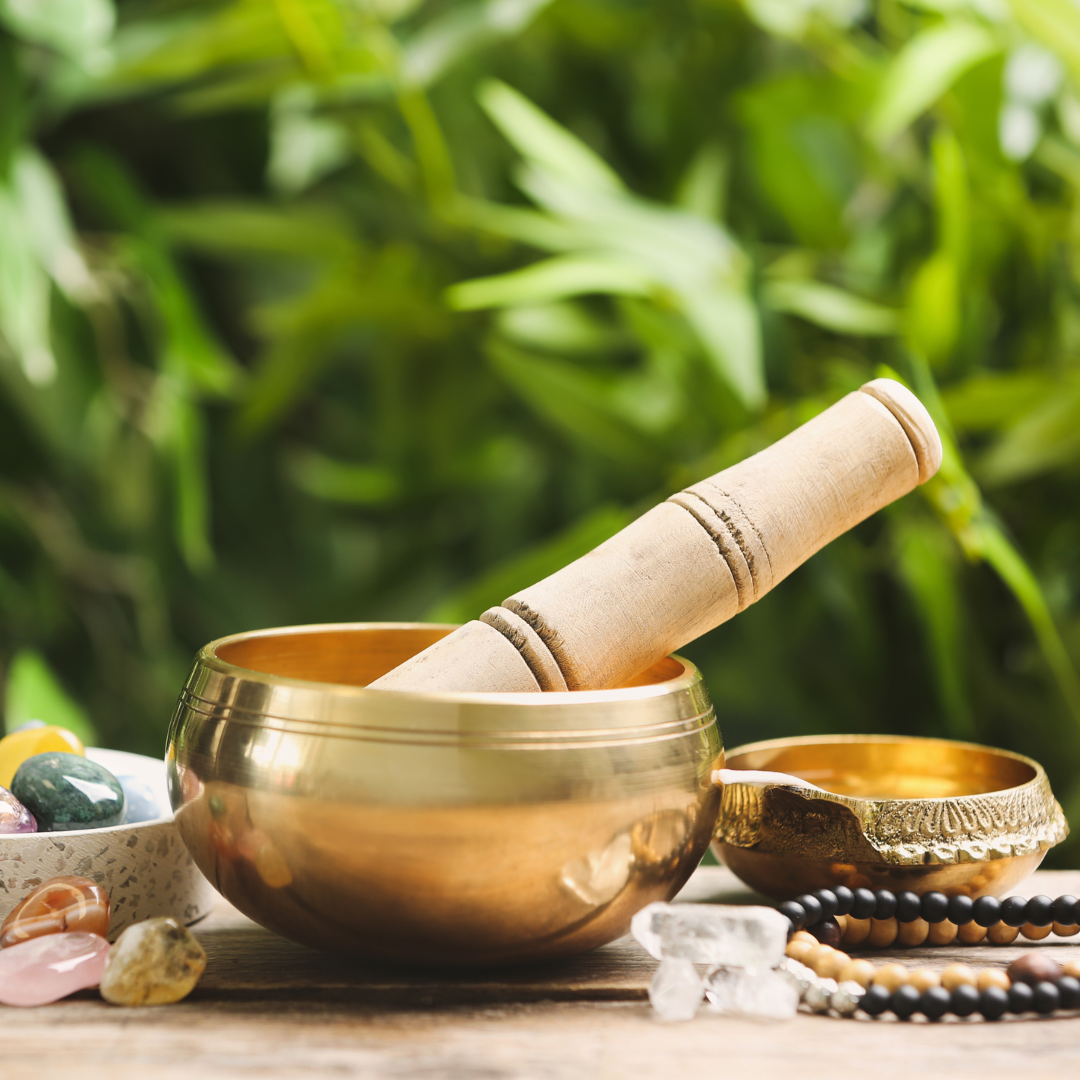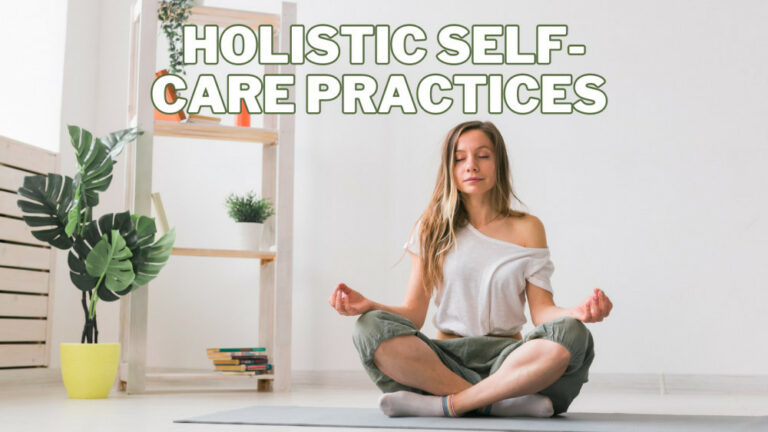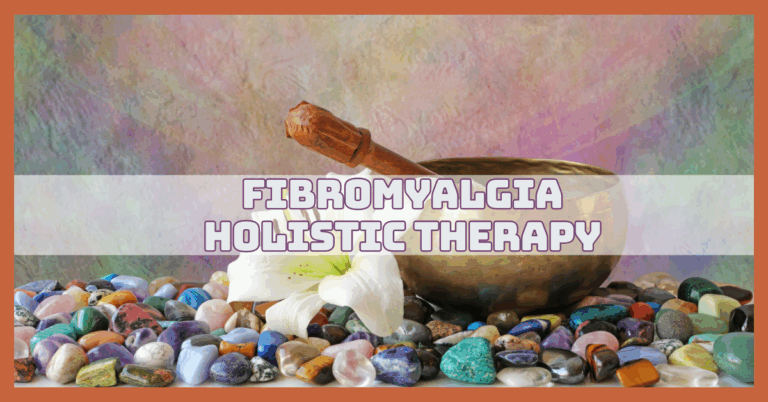Best Holistic Health Practices
Best Holistic Health Practices
Many people are looking for alternative healthcare methods that emphasize holistic well-being in today's fast-paced environment, where stress and the demands of modern life can hurt our well-being.
Holistic health methods consider the interdependence of the mind, body, and spirit to achieve overall harmony and balance.
These practices encompass various disciplines and philosophies that emphasize nurturing every aspect of our being.
From ancient traditions to modern techniques, holistic health practices offer a comprehensive approach to wellness, emphasizing self-care and self-awareness.
This blog post will look at ten holistic health practices that can help you reach the peak of fitness. You can incorporate these practices into your daily routine to promote physical, mental, and emotional health and encourage a healthy and meaningful existence.

10 Types Of Holistic Health Practices
More and more individuals are turning to holistic health practices to nurture their minds, body, and spirit in pursuit of optimal well-being.
Unlike conventional approaches that often focus solely on treating symptoms, holistic health practices adopt a comprehensive perspective that considers the interconnectedness of various aspects of our being.
These ten transformative holistic health practices offer diverse paths toward achieving a harmonious and balanced existence.
From ancient traditions to modern methodologies, each practice brings unique benefits, empowering individuals to take control of their health and wellness journey.

1. Meditation And Mindfulness
Meditation and mindfulness practices offer many benefits for overall well-being. Regular meditation creates a space to detach from the constant stream of thoughts and mental chatter that often accompanies our daily lives.
Focusing on the present moment can alleviate stress and promote relaxation, leading to a calmer mind.
With consistent practice, meditation helps to enhance concentration and improve mental clarity. It trains our minds to be more focused and less easily distracted, allowing us to be fully present in whatever we are doing.
This increased mental acuity can positively impact various areas of our lives, from work and study to relationships and personal pursuits.
Meditation and mindfulness also influence emotional well-being. Moreover, meditation has been shown to impact physical health positively.
Reducing stress levels can benefit cardiovascular health, the immune system, and overall physiological functioning.
Additionally, mindfulness encourages healthier lifestyle choices, such as mindful eating and regular exercise, further contributing to our physical well-being.
Incorporating meditation and mindfulness into our lives can be a manageable time commitment.
Even a few minutes of daily practice can yield noticeable benefits whether sitting quietly, practicing deep breathing exercises, or engaging in guided meditations, finding a meditation technique that resonates with you is key.

2. Yoga
From ancient traditions in India, Yoga has gained immense popularity worldwide as a holistic practice that encompasses the mind, body, and spirit.
At its core, yoga combines physical postures (asanas), breath control (pranayama), and meditation techniques to create a harmonious union between the body and mind.
Individuals can improve their physical fitness by enhancing flexibility, strength, and balance through regular yoga asanas.
The deliberate and controlled movements in yoga help to stretch and strengthen muscles, increase joint mobility, and improve overall body alignment.
Additionally, asanas stimulate various internal organs, promoting better digestion, circulation, and overall vitality.
Beyond the physical benefits, yoga is renowned for its positive impact on mental well-being.
The focused attention required in yoga cultivates mindfulness, helping to calm the mind, quiet mental chatter, and improve mental clarity.
This can enhance concentration, focus, and cognitive function, allowing individuals to navigate their daily lives more easily and clearly.
One of the profound aspects of yoga is its ability to foster a sense of inner peace and emotional balance.
Integrating meditation techniques within yoga promotes self-reflection, self-acceptance, and a deeper connection to one's inner self.
Regular meditation during yoga sessions allows individuals to cultivate a calm and centred state of mind, reducing anxiety and promoting emotional well-being.
Yoga is a versatile practice that can be adapted to individual needs and preferences.
Whether one seeks a gentle and restorative practice or a more vigorous and dynamic flow, various styles and levels of yoga accommodate different abilities and goals.

3. Acupuncture
Since ancient times, acupuncture has been a therapeutic method for fostering healing and reestablishing bodily equilibrium. It is a crucial component of traditional Chinese medicine.
It is based on the idea of Qi (pronounced “chee”), the life force that moves through the body's meridians or passageways.
According to traditional Chinese medicine, various physical and emotional disorders can result from obstructions or imbalances in the Qi flow.
Thin, sterile needles are gently inserted into specific acupuncture points along the meridians during an acupuncture session.
These points are carefully chosen based on an individual's symptoms and overall health condition. The insertion of the needles stimulates the flow of Qi, helping to restore balance and promote healing.
Acupuncture is known for its effectiveness in addressing a wide range of conditions. It is often used to alleviate pain, whether chronic, musculoskeletal, or headache-related.
Releasing endorphins and other natural pain-relieving substances during acupuncture sessions can relieve and promote healing.
Moreover, acupuncture has shown promising results in treating various emotional and mental health concerns.
Controlling the body's stress response and encouraging relaxation can help lower stress, anxiety, and depression.
Acupuncture promotes emotional stability and calmness by reestablishing balance in the body's energy system.

4. Herbal Medicine
Herbal medicine, also known as herbalism or botanical medicine, is a holistic healing practice that harnesses the therapeutic properties of plants to promote health and well-being.
This ancient practice has been used across cultures for centuries, drawing upon the medicinal properties found in different parts of plants, including leaves, flowers, roots, and bark.
Herbal remedies are created by extracting active compounds from plants or using parts of the plant directly. These remedies can be prepared as teas, tinctures, capsules, or topical applications.
Herbal medicine considers each plant's unique combination of active constituents, synergizing to provide therapeutic effects.
Herbal medicine embraces the philosophy of holistic healing, focusing on addressing the root cause of illness and restoring balance within the body.
It recognizes that imbalances or disruptions in the body's systems can manifest as physical, emotional, or mental ailments.
Using plants as medicine, herbalists aim to support the body's innate healing capacity and promote overall well-being.
Herbal remedies can address many conditions, including digestive issues, respiratory disorders, hormonal imbalances, skin conditions, and immune system support.
Herbal medicine often alleviates symptoms, enhances the body's natural defence mechanisms, and supports healing.
One of the advantages of herbal medicine is its individualized approach. When formulating a treatment plan, herbalists consider a person's unique constitution, overall health, and specific symptoms.
This personalized approach allows for targeted and tailored herbal remedies that consider the individual's needs.

5. Ayurveda
Ayurveda, originating in ancient India over 5,000 years ago, is a comprehensive system of medicine that focuses on achieving balance and harmony in all aspects of life.
The foundation of Ayurveda lies in the belief that each individual is unique, with their inherent constitution or dosha (Vata, Pitta, or Kapha), which determines their physical and mental characteristics.
Ayurveda aims to restore balance and promote optimal health by understanding and addressing an individual's unique shape.
Ayurveda offers a holistic approach to well-being, encompassing various aspects of life, including diet, lifestyle, herbal remedies, yoga, meditation, and daily routines.
Diet plays a crucial role in Ayurveda, with specific food choices and combinations tailored to an individual's dosha.
Ayurvedic dietary guidelines emphasize whole, natural foods, balancing tastes, and considering seasonal and individual needs.
Herbal remedies, prepared from plants, minerals, and animal products, support the body's healing process and promote overall well-being.
Ayurveda recognizes the interconnectedness of the mind, body, and spirit, emphasizing yoga and meditation.
Yoga postures, breathwork, and meditation techniques are prescribed to promote physical strength, flexibility, mental clarity, and emotional balance.
These practices help individuals connect with their inner selves, reduce stress, and cultivate a sense of harmony.

6. Energy Healing
Energy healing is a holistic practice that recognizes the existence of subtle energy fields within and around the body.
It believes imbalances or blockages in these energy fields can manifest as physical, emotional, or spiritual ailments.
Energy healing modalities, such as Reiki, Qi Gong, and Healing Touch, work with these energy fields to promote healing and restore balance.
Reiki, a Japanese technique, involves the practitioner placing their hands lightly on or near the body, allowing healing energy to flow through them to the recipient.
This energy transfer promotes relaxation, reduces stress, and supports the body's natural healing processes.
Reiki often addresses various conditions, from pain and inflammation to emotional imbalances and spiritual well-being.
Qi Gong, originating from ancient Chinese traditions, combines movement, breathwork, and meditation to cultivate and balance the body's vital life force energy, known as Qi.
Through gentle and flowing movements, practitioners aim to enhance the flow of Qi, remove energy blockages, and restore harmony within the body.
Qi Gong can be used for overall health maintenance and to address specific health concerns.
Energy healing practices can be performed with a light touch, hands hovering above the body, or even remotely, without physical contact.
Energy healers are noninvasive and gentle, suitable for individuals of all ages and conditions. They work with intention and focus, directing healing energy to areas of imbalance or distress.
These practices are not limited to specific cultures or belief systems. They are based on the premise that everything in the universe is composed of energy, and by working with this energy, balance and healing can be achieved.
Energy healing offers a unique and holistic approach to health and wellness, recognizing the importance of energy flow and balance in supporting the body's innate healing abilities.
These practices can contribute to physical, emotional, and spiritual well-being by tapping into the subtle energies within and around us.

7. Nutrition And Whole Foods
Nutrition and whole foods are fundamental in holistic health practices. Holistic nutrition emphasizes the concept of “food as medicine,” recognizing that the quality and composition of the foods we consume directly impact our overall well-being.
Natural foods are preferred over processed and refined foods. They provide essential nutrients, vitamins, minerals, and phytochemicals that support optimal bodily functions.
A balanced and varied diet is key to holistic nutrition. It includes abundant fresh fruits and vegetables, whole grains, lean proteins, healthy fats, and legumes.
These nutrient-dense foods provide the body with essential macronutrients (carbohydrates, proteins, and fats) and micronutrients (vitamins and minerals) necessary for cellular function, energy production, and immune support.
Mindful eating practices are an essential aspect of holistic nutrition, which acknowledges that individual needs may vary based on age, sex, activity level, and specific health conditions.
It recognizes the importance of personalized nutrition plans that consider these factors to optimize health and well-being.
By adopting a holistic approach to nutrition and prioritizing whole, natural foods, individuals can experience numerous benefits.
These may include increased energy levels, improved digestion, enhanced immune function, weight management, better mental clarity, and a reduced risk of chronic diseases.

8. Aromatherapy
Aromatherapy is a holistic practice that harnesses the power of essential oils, which are concentrated plant extracts obtained from flowers, leaves, stems, and other parts of aromatic plants.
These essential oils contain aromatic compounds that stimulate the senses and have various therapeutic effects on the mind, body, and spirit.
Essential oils can be used in several ways in aromatherapy. Inhalation is a common method, where the aroma of the oils is inhaled directly or through diffusers.
Inhalation allows the volatile molecules of the oils to reach the olfactory system and stimulate the brain, influencing emotions, mood, and overall well-being.
Depending on the specific oil used, the scents can be calming, uplifting, or grounding.
Aromatherapy also employs the topical application of essential oils. You can apply diluted essential oils to the skin using massages, baths, or compresses.
It's well known that aromatherapy can improve mood and ease tension while encouraging relaxation.
Lavender, chamomile, and bergamot are essential oils that offer calming and soothing effects that can aid with insomnia and anxiety and foster a calm state of mind.
Beyond the emotional and mental effects, aromatherapy can also have physical benefits. Some essential oils possess antimicrobial properties, which can help support the immune system and protect against infections.
Others may have analgesic properties, providing relief from pain and inflammation. Additionally, certain oils can aid in respiratory health, ease congestion, or improve digestion.

9. Sound Therapy
Sound therapy, also known as proper healing or vibrational therapy, is a holistic practice that utilizes the power of good vibrations to promote relaxation, balance, and healing.
It is based on the understanding that everything in the universe, including our bodies, is in a constant state of vibration.
Sound therapy aims to restore harmony within the body, mind, and spirit by introducing specific frequencies and vibrations through instruments or voices.
One of the commonly used tools in sound therapy is singing bowls. These metal bowls are struck or rubbed with a mallet to produce resonant tones and vibrations.
The sound and vibrations of the bowls penetrate deep into the body, promoting relaxation and releasing tension.
The vibrations harmonize the body's energy systems, including the chakras (energy centers) and meridians (energy pathways), restoring balance and promoting well-being.
Tuning forks, metal instruments that produce a specific frequency when struck or activated, are another popular tool in sound therapy.
The vibrations are transmitted by placing the tuning forks on or near the body, affecting the energy flow and promoting harmony.
Each tuning fork is associated with a particular frequency or musical note, believed to correspond to specific aspects of the body and energy centers.
Sound therapy can also involve vocal techniques, such as chanting or toning. The voice is used to produce specific sounds and vibrations, which can have a profound impact on the body and mind.
Chanting mantras or using vowel sounds can help calm the mind, relax the body, and create a meditative state.
The benefits of sound therapy are numerous. It can help reduce stress, anxiety, and tension and improve sleep quality and relaxation.
Sound vibrations can also stimulate the release of endorphins, the body's natural pain-relieving and mood-enhancing chemicals.
Additionally, sound therapy supports the immune system, enhances mental clarity, and promotes a sense of connectedness and spiritual well-being.

10. Mind-Body Practices
Mind-body practices encompass a range of holistic disciplines that emphasize the connection between the mind, body, and spirit.
These practices promote well-being by integrating physical movement, breath control, and mindfulness.
Tai chi, originating from ancient Chinese martial arts, consists of slow and flowing movements that help improve balance, flexibility, and strength while fostering relaxation and mental focus.
Qigong, also from Chinese traditions, involves gentle movements, breathing techniques, and meditation to cultivate and balance the body's vital life force energy, known as Qi.
Joseph Pilates developed Pilates, which focuses on core strength, flexibility, and body awareness through controlled movements, precise alignment, and mindful breathing.
Mind-body practices offer numerous benefits. Many mind-body practices can be adapted to different fitness levels and practiced by people of various ages and abilities.
They can be tailored to meet specific goals, whether improving physical strength, managing stress, or promoting relaxation.
Some mind-body practices can be practiced individually, while others are taught in group settings with the guidance of trained instructors.

Conclusion
In conclusion, holistic health practices encompass diverse approaches prioritizing mind, body, and spirit interconnectedness.
These practices recognize that optimal well-being is achieved through addressing all aspects of a person's being.
From meditation and mindfulness to yoga, acupuncture, herbal medicine, Ayurveda, energy healing, nutrition and whole foods, aromatherapy, sound therapy, and mind-body practices like tai chi and Pilates, each practice offers unique benefits and contributes to a holistic approach to health.
Embracing a holistic approach to health allows individuals to cultivate a deeper connection with their bodies, enhance self-awareness, and take an active role in their well-being.
By incorporating these holistic practices into daily life, individuals can support their physical, mental, and emotional health, leading to a more balanced and fulfilling lifestyle.
I trust you enjoyed this article on the Best Of Holistic Health Practices. Please stay tuned for more blog posts to come shortly. Take care!
JeannetteZ
>>>Please click here to read my all-inclusive article about A Comprehensive Guide To Healing Naturally<<<
>>>Are you interested in Natural Healing through Herbs? Please click here for my #1 Recommendation<<<
Your Opinion Is Important To Me
Thoughts? Ideas? Questions? I would love to hear from you. Please leave your questions, experience, and remarks about the Best Holistic Health Practices article in the comments below. You can also reach me by email at Jeannette@Close-To-Nature.org.
Disclosure
This post may contain affiliate links. As an Amazon Associate and other affiliate programs, I earn from qualifying purchases at no extra cost to you. Please read my full affiliate disclosure.
You might also enjoy these blog posts:
Best Holistic Health Remedies For Anxiety
Best Holistic Health Practices For Stress Relief
Best Holistic Health Benefits For Mental Health








